Vice President Chen Chien-jen (陳建仁) on Sunday inaugurated the base for the implementation of the government’s “Asian Silicon Valley” project, which is designed to improve the nation’s overall economic structure.
The major tasks of the Executive Center for the Asian Silicon Valley Plan in Taoyuan are to promote the Internet of Things (IoT) and innovative industries, boost economic development by integrating local and international sectors, and push industrial transformation, Chen said at the ceremony.
The opening is the first step for the executive center, from which Taiwan intends to bring together talent in innovation from around the world, making them into the power driving Taiwan’s industrial upgrade and transformation, Chen said.
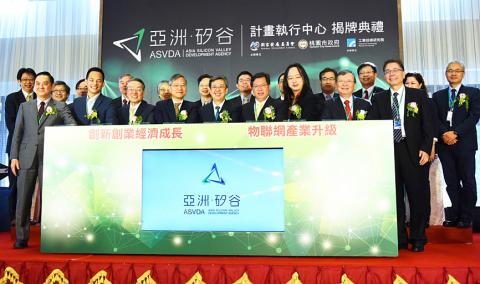
Photo: Lee Jung-ping, Taipei Times
The center is in a financial building in front of the Taoyuan High Speed Rail Station in Jhongli District (中壢).
Chen said the new facility is expected to develop Taoyuan into the engine for Taiwan’s economic development.
The plan was not formed to make a Taiwanese copy of Silicon Valley in California, “but to encourage Taiwanese industries to have the spirit of innovation,” Chen said.
According to the National Development Council, which drafted the Asian Silicon Valley implementation plan, it consists of “one ecosystem,” “two objectives,” “three links” and “four strategies.”
The ecosystem means the formation of a cluster of innovative start-ups with a heavy focus on research and development (R&D), while the two objectives include one to foster the ecosystem and another to promote innovative R&D for IoT industries, the council said. The three links means joining local industries to connect Taiwan to the world and build links to the future.
As for the four strategies, they are the concrete steps the government will take to tie Taiwan to Silicon Valley and other global technology clusters, turning the nation into an innovative start-up destination for young Asians and creating new industries for the next generation, it said.
The implementation strategies include creating a robust start-up and entrepreneurship ecosystem by cultivating innovative talent, providing business expansion capital and adjusting laws to create a friendlier environment for start-ups; establishing a one-stop service center to integrate the R&D capabilities of Silicon Valley and other global innovation clusters; integrating Taiwan’s hardware advantages into software applications; and establishing a quality Internet environment, it said.
The plan’s implementation period will run through 2023, the council said.
A budget of NT$11.3 billion (US$350.4 million) has already been allocated for next year for Internet infrastructure, mobile broadband services, e-commerce, smart applications, industry-university collaboration, test beds, digital talent and regulatory adjustment, the council said.
Projecting the combined effect of the Asian Silicon Valley plan and other digital economy plans, the council said it expects Taiwan’s IoT global market share to climb from 3.8 percent last year to 4.2 percent by 2020 and to 5 percent by 2025.
Premier Lin Chuan (林全) has said that the aim of the plan is to improve the nation’s overall economic structure.
The Asian Silicon Valley initiative is similar in nature to the Industry 4.0 movement taking hold around the world and is one of five innovative industries upon which President Tsai Ing-wen (蔡英文) has vowed to focus, Lin said.
Four other innovative industries the Tsai administration has designated as the core of Taiwan’s economy are “smart” machinery, “green” technology, biomedical technology and national defense.
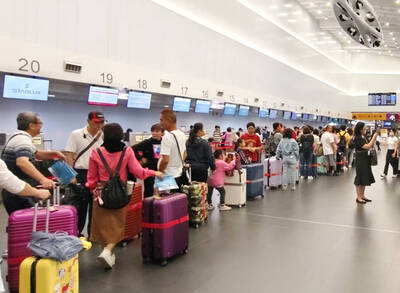
Three Taiwanese airlines have prohibited passengers from packing Bluetooth earbuds and their charger cases in checked luggage. EVA Air and Uni Air said that Bluetooth earbuds and charger cases are categorized as portable electronic devices, which should be switched off if they are placed in checked luggage based on international aviation safety regulations. They must not be in standby or sleep mode. However, as charging would continue when earbuds are placed in the charger cases, which would contravene international aviation regulations, their cases must be carried as hand luggage, they said. Tigerair Taiwan said that earbud charger cases are equipped
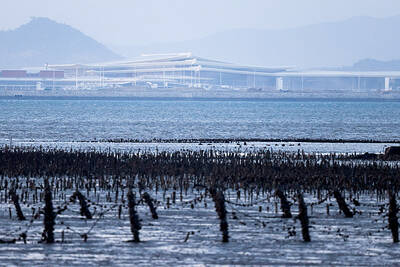
UNILATERAL MOVES: Officials have raised concerns that Beijing could try to exert economic control over Kinmen in a key development plan next year The Civil Aviation Administration (CAA) yesterday said that China has so far failed to provide any information about a new airport expected to open next year that is less than 10km from a Taiwanese airport, raising flight safety concerns. Xiamen Xiangan International Airport is only about 3km at its closest point from the islands in Kinmen County — the scene of on-off fighting during the Cold War — and construction work can be seen and heard clearly from the Taiwan side. In a written statement sent to Reuters, the CAA said that airports close to each other need detailed advanced
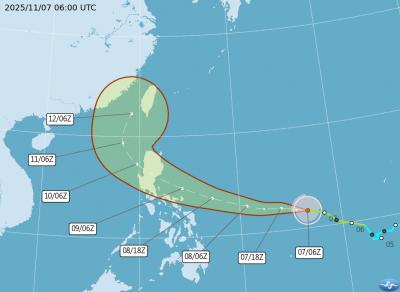
Tropical Storm Fung-Wong would likely strengthen into a typhoon later today as it continues moving westward across the Pacific before heading in Taiwan’s direction next week, the Central Weather Administration (CWA) said. As of 8am, Fung-Wong was about 2,190km east-southeast of Cape Oluanpi (鵝鑾鼻), Taiwan’s southernmost point, moving westward at 25kph and possibly accelerating to 31kph, CWA data showed. The tropical storm is currently over waters east of the Philippines and still far from Taiwan, CWA forecaster Tseng Chao-cheng (曾昭誠) said, adding that it could likely strengthen into a typhoon later in the day. It is forecast to reach the South China Sea
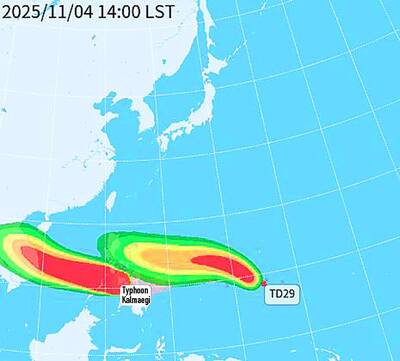
WEATHER Typhoon forming: CWA A tropical depression is expected to form into a typhoon as early as today, the Central Weather Administration (CWA) said yesterday, adding that the storm’s path remains uncertain. Before the weekend, it would move toward the Philippines, the agency said. Some time around Monday next week, it might reach a turning point, either veering north toward waters east of Taiwan or continuing westward across the Philippines, the CWA said. Meanwhile, the eye of Typhoon Kalmaegi was 1,310km south-southeast of Oluanpi (鵝鑾鼻), Taiwan’s southernmost point, as of 2am yesterday, it said. The storm is forecast to move through central